Rome Layover Guide (CIA)
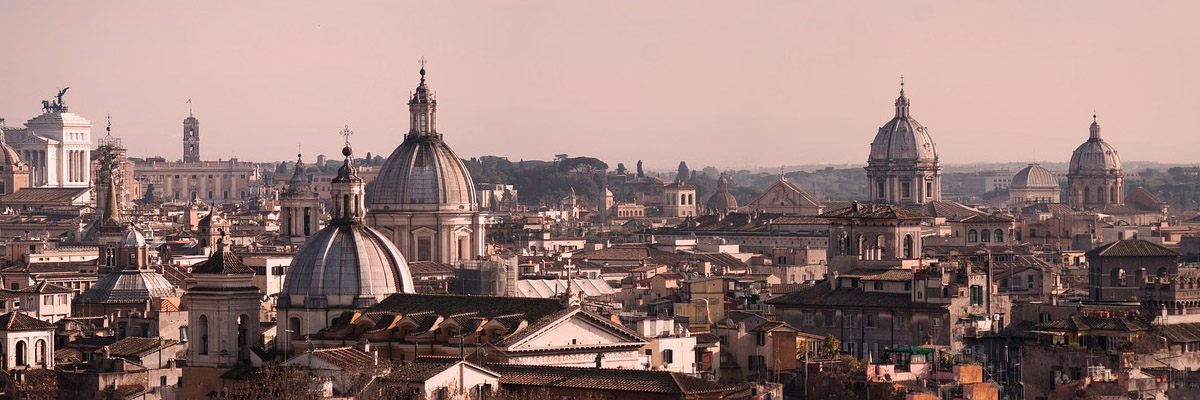
What are you looking for in CIA?
Tours/To do | Relax/Sleep | Internet/SIM | Transport | Storage | Money
Rome—Ciampino International Airport “G. B. Pastine” (CIA) is the second major international airport found in Rome, Italy. It is located 12 km (7.5 mi) from the center of the remarkable capital. The airport has had commercial flights since it was opened in 1916. Rome is a global city that serves as the cultural, economic and civil capital of Italy. Rome is known for its history that spans 28 centuries, its tasty cuisine, outstanding landmarks, impressive architecture, and culture.
Can you leave Rome Airport (CIA) airport during a layover? Do you need a visa?
It's possible for certain travelers to visit Rome during a layover but depending on nationality others will need a tourist visa or transit visa. (more info).
Tours, Things to do, Sightseeing
Italy Organized Tours
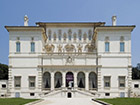
Rome: Borghese Gallery
A visit to the Borghese Gallery in Rome is one of the best ways to discover masterpieces of art inside this former villa. The art collection available is vast yet you can explore the huge collections at your own pace. Bedazzled sculptures and paintings by Bernini, Canova, Caravaggio, Titian and other masters of the art will be a sight to marvel at. Discover highlights such as the representation of Pauline Bonaparte by Canova, and go to the Caravaggio room to look at paintings such as “David with the Head of Goliath” and the “Boy with a Basket of Fruit.” See Raphael’s “The Deposition” and “Lady with a Unicorn,” along with sculptures by Bernini, including his “Apollo and Daphne” and “David”. Go for a stroll around the gardens for a view over the Piazza del Popolo » book this tour
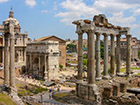
Rome: Colosseum, Roman Forum, Palatine Hill
Get into the Colosseum, Palatine Hill, and Roman Forum in central Rome through the fast track entrance with this combined package. This affords you a hassle-free experience at your own pace as you get to marvel at the remains of some of the greatest monuments of the Roman Republic. The best convenience is skipping the long ticket line and going straight to the fast track entrance for security checks. After entering the Colosseum at your allotted time, relive the stories of emperors and gladiators which begun under the emperor Vespasian in 72 AD, and was completed by his son Titus in 80 AD, the Colosseum was the largest amphitheater ever built and one of the wonders of the ancient world. Your ticket also includes one entry to the Palatine Hill and Roman Forum, which are must-see sights for all those visiting the “Eternal City.” » book this tour
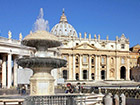
Skip-the-Line Vatican, Sistine Chapel, St. Peter’s Tour
Immerse yourself in the Vatican’s awe-inspiring art at the Sistine Chapel, Vatican Museums, St. Peter’s Basilica, and more. This tour allows you more time in the Vatican’s awe-inspiring art with no-wait access to the museums and basilica. With this tour, you will be in a group of 20 people or fewer and your expert guide will bring the art and history to life in the Sistine Chapel, Vatican Museums, St. Peter’s Basilica, and more. You also get to avoid the long public line and go straight to the front of the Vatican Museums. Get to learn about the history and people behind the art in the Pinecone Courtyard, the Hall of Maps, the Gallery of Tapestries, and the Gallery of Candelabra. Next, you will visit and hear the story of the magnificent Sistine Chapel. The tour ends in St. Peter’s Square, here you can spot the balcony where the Pope delivers his public addresses, and take photos of the imposing exterior of the basilica. » book this tour
Italy Things to do / Sightseeing
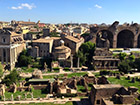
Palatine Hill
Set 50 meters above the Tiber, the Palatine Hill is evident of Rome’s earliest settlement. The rock-cuttings found in front of the Temple of Cybele show human activity as far back as the ninth century BC. The site was later chosen by the emperors and the aristocratic families for their palaces. The beautiful Farnese Gardens were laid out on the hill for Cardinal Alessandro Farnese in the 16th century, a pleasure park of terraces, trees, pavilions and fountains designed in the form of stage-setting for social gatherings.
Time required: 1 hour.
Airport to here: You can get here in 25 minutes by taxi or shuttle or in 40 minutes by train.
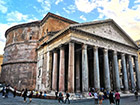
The Pantheon
The Pantheon is the best-preserved monument of Roman antiquity. This is because of how it has been remarkably intact for its 2000 years and still counting. Pope Gregory III removed the gilded bronze roof tiles, and Pope Urban VIII also ordered its bronze roof stripped and melted down to cast the canopy over the altar in St. Peter’s and cannons for Castel Sant’Angelo. The Pantheon was reconstructed after it was damaged by fire in AD 80, and the brickwork, as a result, shows the extraordinarily high and unique technical mastery of Roman builders. Its 43-meter dome, the supreme achievement of Roman interior architecture, hangs suspended without any visible supports – these are meticulously hidden inside the walls. The harmonious effect of the interior is a result of its proportions: the height is the same as the diameter and its nine-meter central opening is the building’s only source of light.
Time required: 2 hours.
Airport to here: It takes about 25 minutes to get here by taxi or 45 minutes by train.
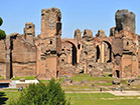
Baths of Caracalla
The Baths of Caracalla was completed in 216, these weren’t ordinary public baths. They were a complete sports center, with hot and cold baths, dry and steam saunas, a swimming pool, gymnastics and sports facilities, libraries, hairdressers, gardens, social rooms, and shops. The huge and magnificent structure covers an area of 300 square meters, a complex of gigantic halls whose domes and vaulting are supported by huge columns and piers. It could accommodate a large number of 1,500 people at a time. The floors and walls here were covered with marbles, frescoes, and mosaics making it still outstanding even in its ruins.
Time required: 1 hour.
Airport to here: You can get here in about 20 minutes by taxi or 50 minutes by bus.
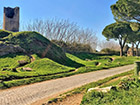
The Catacombs and Via Appia Antica
The Catacombs of San Callisto (St. Callixtus) and San Sebastiano, are both underground burial places in the Via Appia Antica( Appian Way). They are extensive – San Callista fills an area of 300 by 400 meters with intricate multi-layered networks of passages and chambers that have been carved into the soft tufa. In addition, St. Calixtus is home to six sacramental chapels, built between 290 and 310, with pagan and early Christian wall paintings. San Sebastiano, one of the seven pilgrimage churches in Rome, was built in the fourth century on the site of old cemeteries and catacombs that, along with the foundations of a Constantinian basilica, can be explored at any time.
Time required: 1 hour.
Airport to here: One can get here in less that 30 minutes by taxi or in 1 hour by train.
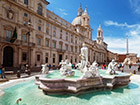
Piazza Navona
Piazza Navona is one of Rome’s most famous Baroque squares. It still has the outline of the Roman stadium built here by Emperor Domitian. The square was used for festivals and horse races during the Middle Ages and was reconstructed in the Baroque style by Borromini, the well-known designer of a magnificent series of palaces and the church of Sant’Agnese, on its west side. In the crypt of Sant’Agnese, there is Alessandro Algardi’s 1653 The Miracle of St. Agnes and the remains of a Roman mosaic floor.
Time required: 1 hour.
Airport to here: You can reach here by taxi in 25 minutes or by bus in 50 minutes.
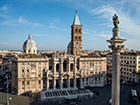
Santa Maria Maggiore
Considered to be one of Rome’s biggest churches, Santa Maria Maggiore has been in existence since the fourth-century. Pope Liberius once had a vision of the Holy Virgin directing him to construct a church where snow fell the next day. It was August and surprisingly snow did fall on the Esquiline hill the following morning, so the great basilica was built here. The three aisles of 86-meter-long structure’s interior are separated by 40 columns of marble and four of granite, where the apse added in the 13th century is lined with mosaics of the Old and New Testament themes. Mass comes off here every day since the fifth century
Time required: 2 hours.
Airport to here: It usually takes about 20 minutes to get here by taxi or 40 minutes by by train.
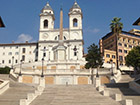
Centro Storico and Spanish Steps
Centro Storico, the historic center of Rome, with so many art-filled churches, resplendent palaces, and vibrant squares that you may end up using your whole vacation strolling its ancient streets and lanes. the neighborhood’s atmosphere is something you must spend some time absorbing instead of going from one of its attractions to the next. At the Spanish Steps is the flight of irregular stairs and landings that lead up to the French church of Trinità dei Monti. The stairs got their name from Piazza di Spagna, the plaza at their base and one the most typical squares in Rome. The stairs have been a favorite place for tourists over the years.
Time required: 2 hours.
Airport to here: It takes an average of 30 minutes to get here by taxi or 40 minutes by the recommended train.
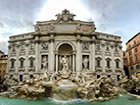
Trevi Fountain
The Trevi Fountain is one of the city’s most popular tourist attractions and Mass has been held here every day since the fifth century. In films countless times until it almost needs a first-hand visit. The 17th-Century masterpiece is an outstanding place to be. Throwing a coin into the Trevi Fountain is a tradition that supposedly assures you of your return to Rome. Being Rome’s largest fountain, Fontana di Trevi(Trevi Fountain) is supplied by an aqueduct originally built by Agrippa, the great art patron of the first century BC, to bring water to his baths.
Time required: 1 hour.
Airport to here: It usually takes about 25 minutes to get here by taxi or 40 minutes by train.
Things to Do in Rome Airport (CIA)
Relaxing and Sleeping
Airport Lounges and Relaxing
There are numerous lounges in each terminal Airport. » view all lounges or buy a lounge pass or membership online
Hotel and Sleeping
There are many hotel options minutes away from the airport. » view all or book an airport hotel online
Rest Area and Sleeping in Airport
There are designated rest areas within the airport in each of the terminals.
WIFI/Internet and SIM Card
WIFI/Internet: Free WiFi is available at Ciampino Airport, connect to the “AIRPORT FREE WIFI” to join the unlimited service.
SIM/eSIM Card: There are several shops within the airport that sell SIM cards. » Find out where and how to buy SIM card/eSIM in our Rome Airport (CIA) sim/eSim page.
Transportation to/from airport
Taxi: Taxis are available just outside the Arrival halls.
Train: Trenitalia Ciampino Airlink offers a train service which connects to Rome. (more info).
Bus: There are several bus connections to Rome as well as a daily connection between the airport and the city. (more info).
Shuttle: There are shuttle buses run by hotels and private companies.
Car rentals: Car rentals are available onsite at the entrance of the airport inside P6, P8 and P12 parking areas. » view available cars or rent a car now online
Parking: The car park has about 110 open-air street-level parking spaces 200 meters from the Terminals, recommended for stays of up to one hour and unfortunately, they can’t be booked online.
Luggage Storage & Lockers
There are no designated luggage storage or lockers » Find out where to book and left your luggage in our Rome Airport (CIA) left luggage and storage page or directly book here (subject to availability).



